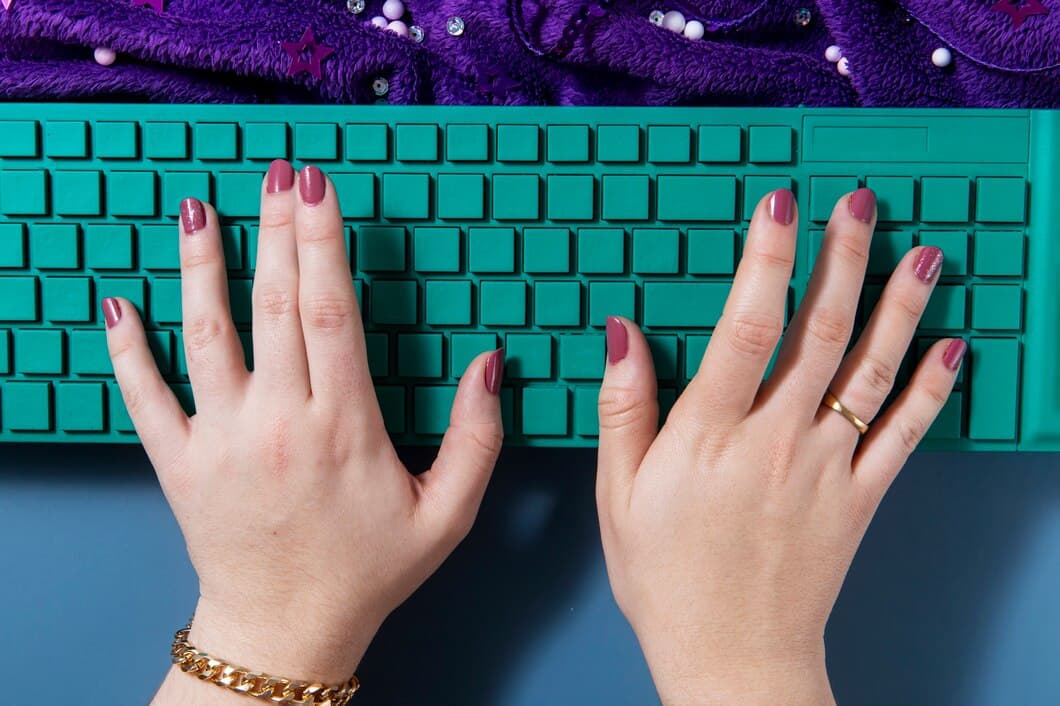How To Fix A Keyboard That Is Typing Numbers Instead Of Letters On A Mac?

If your Mac keyboard is typing numbers instead of letters, it can be frustrating. However, there are a few simple steps you can take to fix the problem.
First, try resetting the keyboard by unplugging it from your Mac and then plugging it back in. This will often fix the problem. If that doesn't work, you can try restarting your Mac. In some cases, the problem may be caused by a software issue, and restarting your Mac will resolve it.
Check keyboard settings
First, you need to check your keyboard settings to make sure that they are correct. To do this, go to the "System Preferences" menu and then click on the "Keyboard" icon. In the "Keyboard" pane, click on the "Input Sources" tab and make sure that the correct input source is selected. If the correct input source is not selected, click on the "Add" button and then select the correct input source from the list. Once you have selected the correct input source, click on the "Save" button.
If you are still having problems with your keyboard, you can try resetting the keyboard settings to their default values. To do this, go to the "System Preferences" menu and then click on the "Keyboard" icon. In the "Keyboard" pane, click on the "Reset" button and then click on the "Restore Defaults" button. Once you have reset the keyboard settings to their default values, click on the "Save" button.
If you are still having problems with your keyboard, you may need to contact Apple support for further assistance.
Reset keyboard settings
If you're having trouble with your Mac keyboard typing numbers instead of letters, it may be because the keyboard settings have been changed. To reset the keyboard settings, follow these steps:
1. Open the System Preferences menu.
2. Click on the "Keyboard" icon.
3. Click on the "Input Sources" tab.
4. Select the "Automatic" input source.
Restart your Mac
If the above steps do not resolve the issue, you may need to restart your Mac. This will clear the keyboard's memory and may resolve the problem. To restart your Mac, click on the Apple menu and select "Restart." Your Mac will then shut down and restart.
If restarting your Mac does not resolve the issue, you may need to contact Apple Support for further assistance.
Check for software updates

To check for software updates, click on the Apple menu in the top-left corner of your screen, then select "System Preferences." Click on "Software Update" to see if any updates are available for your Mac.
If an update is available, click on the "Update Now" button to download and install the update. Your Mac will restart after the update is installed. Once your Mac has restarted, check to see if your keyboard is working properly.
If your keyboard is still not working properly, you may need to reset the SMC (System Management Controller). To do this, shut down your Mac, then press and hold the Shift + Control + Option keys while you press the power button. Hold these keys for 10 seconds, then release them and press the power button again to turn on your Mac.
Once your Mac has started up, check to see if your keyboard is working properly. If it is still not working properly, you may need to contact Apple Support for further assistance.
Uninstall and reinstall the keyboard driver
If the above steps do not resolve the issue, you may need to uninstall and reinstall the keyboard driver. To do this, click on the Apple menu and select "System Preferences." Then, click on "Bluetooth" and select your keyboard from the list of devices. Click on the "Remove" button and then click on the "Add" button to add the keyboard back. Once the keyboard has been reinstalled, restart your Mac and see if the issue has been resolved.
If you are still having problems with your keyboard, you may need to contact Apple Support for further assistance.
Here are some additional tips that may help you fix the issue:
- Make sure that the keyboard is properly connected to your Mac.
- Try using a different USB port.
- Reset the SMC and NVRAM on your Mac.
- Start your Mac in Safe Mode and see if the issue persists.
Clean the keyboard
If your keyboard is typing numbers instead of letters on your Mac, one of the first things you should try is cleaning it. Crumbs, dust, and other debris can build up under the keys over time, causing them to stick or type the wrong characters. To clean your keyboard, turn it upside down and shake it gently to remove any loose debris. Then, use a soft brush or a can of compressed air to blow out any remaining dust or crumbs. Finally, use a damp cloth to wipe down the keys and the rest of the keyboard.
If cleaning your keyboard doesn't solve the problem, you may need to reset it. To do this, shut down your Mac and then turn it back on while holding down the Shift key. This will reset the keyboard to its default settings. If you're still having problems with your keyboard, you may need to replace it.
Try a different keyboard
If you have tried all the above steps and your keyboard is still typing numbers instead of letters, the issue may be with your keyboard itself. Try connecting a different keyboard to your Mac to see if that solves the problem. If the different keyboard works fine, then the issue is definitely with your original keyboard and you may need to replace it.
When trying a different keyboard, make sure that it is compatible with your Mac. Apple keyboards are designed to work seamlessly with Macs, but you can also use third-party keyboards. If you are using a third-party keyboard, make sure that it has the correct drivers installed for your Mac.
If you have tried a different keyboard and the problem persists, the issue may be with your Mac itself. In this case, you may need to contact Apple Support for further assistance.
Check for hardware issues
Before you try any software fixes, it's essential to check for hardware issues that may be causing the problem. First, try plugging the keyboard into a different USB port on your Mac. If that doesn't solve the problem, try using a different keyboard to see if the issue persists. If the problem persists with a different keyboard, it's likely a software issue, and you can proceed to the next step.
If you're using a Bluetooth keyboard, make sure that it's properly paired and connected to your Mac. You can check this by going to the Bluetooth menu in System Preferences. If the keyboard is not paired or connected, follow the instructions to pair and connect it.
Once you've checked for hardware issues, you can proceed to the next step, which is to reset the keyboard settings. This can be done by going to the Keyboard menu in System Preferences and clicking on the "Reset Keyboard Shortcuts" button.
Contact Apple Support
If the steps above do not fix the issue, you may need to contact Apple support for further assistance. You can reach Apple support by phone at 1-800-APL-CARE (1-800-275-2273) or by visiting the Apple support website at https://support.apple.com.
When contacting Apple support, be sure to have your Mac's serial number and a detailed description of the issue you are experiencing. Apple support may be able to help you troubleshoot the issue over the phone or may need to have your Mac serviced.
Frequently Asked Questions
Is the Num Lock key on?
The Num Lock key is located on the upper right-hand side of the keyboard. If it is turned on, the keyboard will type numbers instead of letters. To turn off Num Lock, press the Fn key and the Num Lock key at the same time.
Are the keyboard settings correct?
The keyboard settings may be incorrect, causing the keyboard to type numbers instead of letters. To check the keyboard settings, go to System Preferences > Keyboard. In the Keyboard pane, click on the Input Sources tab. Make sure that the correct keyboard layout is selected.
Is the keyboard damaged?
If the keyboard is damaged, it may not be able to type letters correctly. To check if the keyboard is damaged, try typing on a different keyboard. If the other keyboard works correctly, then the first keyboard is likely damaged.
What if none of the above solutions work?
If none of the above solutions work, you may need to contact Apple Support for further assistance.
Summary
If your Mac keyboard is typing numbers instead of letters, it can be frustrating. This issue can be caused by several factors, including a conflict with another input source, a stuck key, or a problem with the keyboard itself. To fix this issue, you can try several troubleshooting steps.
First, try restarting your Mac. This will clear any temporary glitches that may be causing the issue. If that doesn't work, try resetting the NVRAM. This will reset the Mac's memory settings, which may resolve the issue. If you're still having problems, try resetting the SMC. This will reset the Mac's system management controller, which may also resolve the issue.




